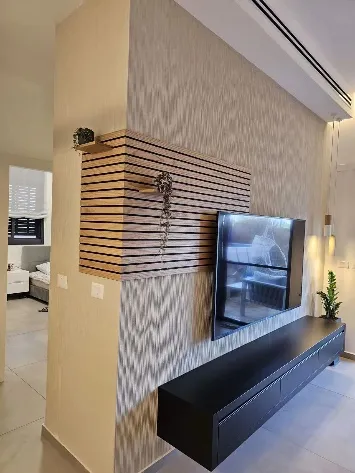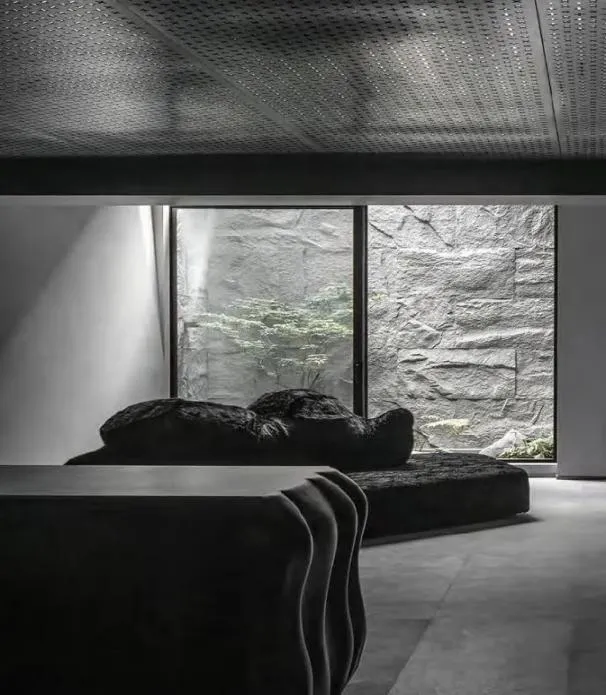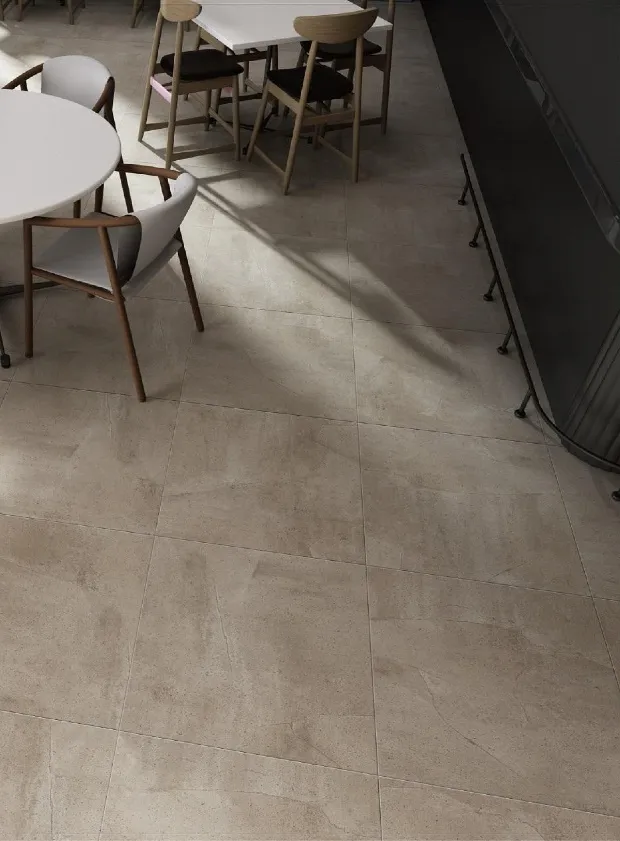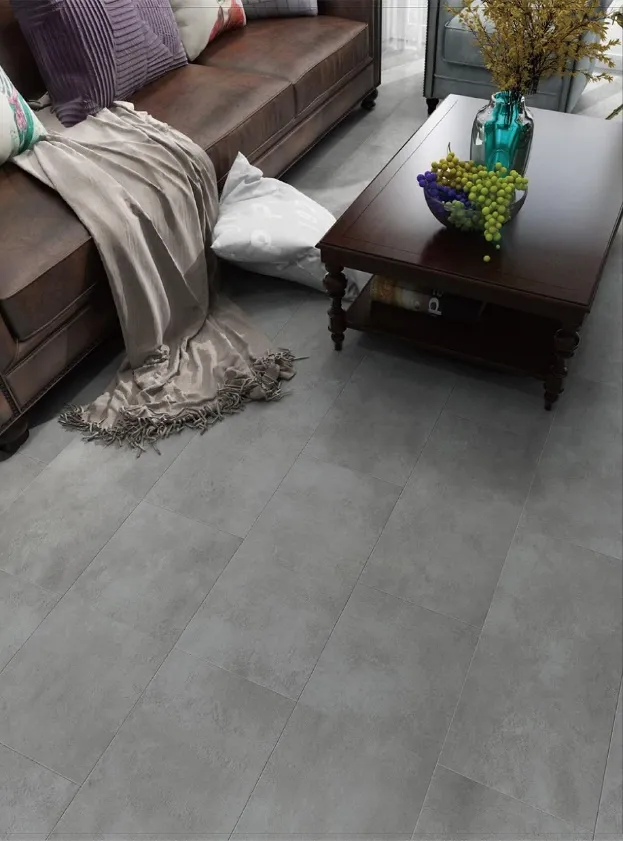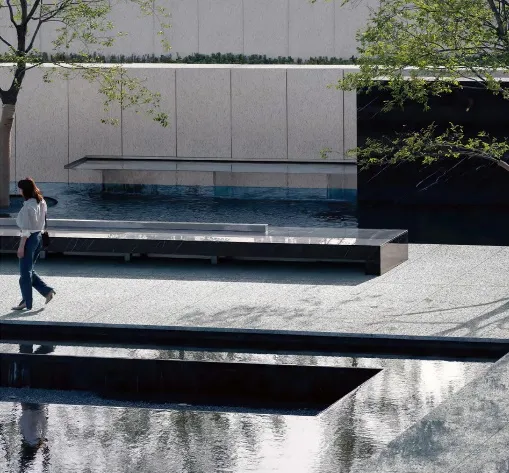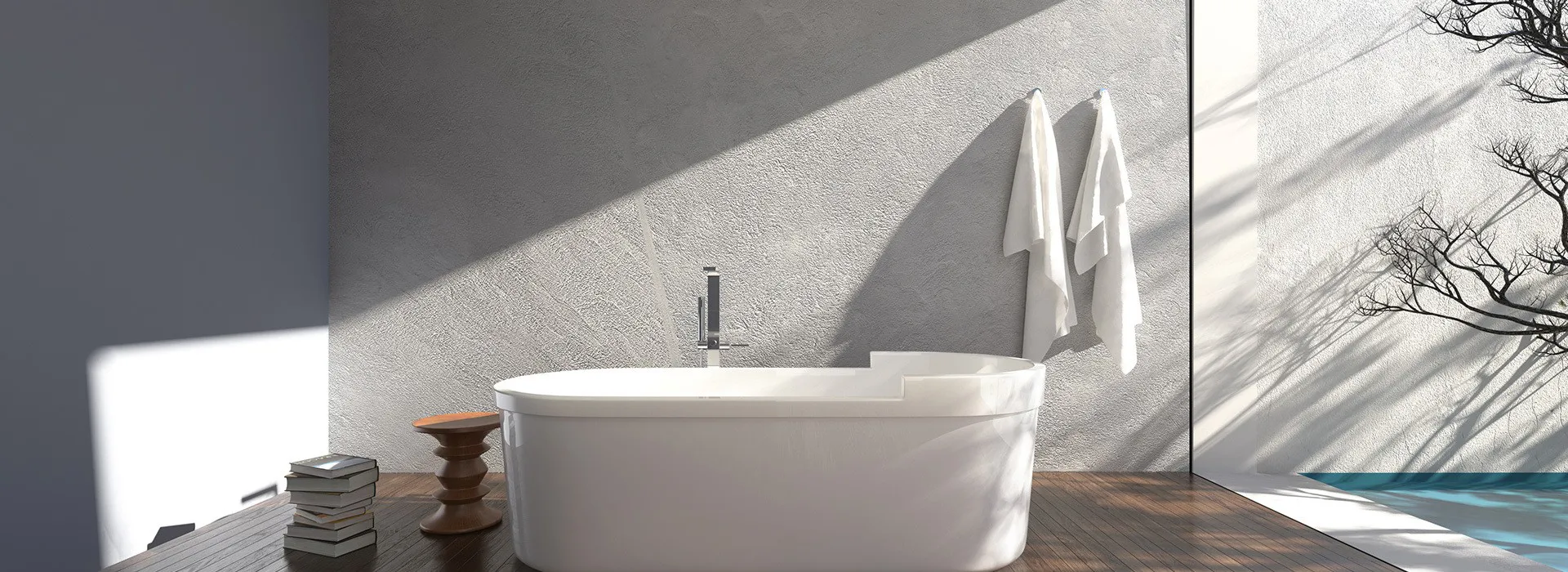
WPC Wall Panels Explained: Composition, Benefits & Core Features

In the world of modern interior and exterior design, the search for materials that blend aesthetics, durability, and practicality is never-ending. Homeowners, architects, and contractors alike are constantly on the lookout for solutions that don't just look good but also stand the test of time—especially in spaces where walls take a beating, from busy family homes to high-traffic commercial buildings. Enter WPC wall panels: a versatile, innovative option that's quickly becoming a favorite in both residential and commercial projects. But what exactly are WPC wall panels? How are they made, and what makes them worth considering over traditional materials like wood, vinyl, or concrete? In this guide, we'll dive deep into the composition, benefits, and core features of WPC wall panels, and even touch on how to find a reliable wpc wall panel supplier that can deliver tailored wpc wall panel solutions for your next project.
What Are WPC Wall Panels?
Before we get into the nitty-gritty, let's start with the basics: WPC stands for Wood-Plastic Composite. As the name suggests, these panels are a hybrid material, combining the best of wood and plastic to create something greater than the sum of its parts. Unlike solid wood, which is prone to warping, rotting, or insect damage, or pure plastic, which can feel cheap and lacks natural texture, WPC wall panels strike a balance. They offer the warm, organic look of wood with the durability and low maintenance of plastic—making them a smart choice for anyone who wants walls that are both beautiful and built to last.
Originally developed for outdoor decking, WPC technology has evolved dramatically over the past decade, expanding into wall panels, fencing, and even furniture. Today, WPC wall panels are used in everything from cozy living rooms and sleek office lobbies to moisture-prone bathrooms and weather-exposed exterior cladding. Their versatility is part of their appeal, but it's their unique composition that truly sets them apart.
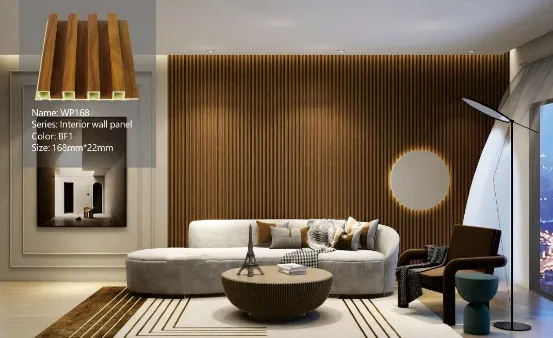
The Composition of WPC Wall Panels: What's Inside?
At first glance, WPC wall panels might look like painted wood or textured plastic, but their makeup is surprisingly complex. To create a panel that's strong, flexible, and visually appealing, manufacturers carefully blend three main components: wood fibers, plastic polymers, and additives. Let's break down each part and how it contributes to the panel's overall performance.
| Component | Description | Role in the Panel | Key Benefit |
|---|---|---|---|
| Wood Fibers | Typically recycled wood waste (sawdust, wood chips, or bamboo fibers) | Adds structural strength, natural texture, and reduces plastic usage | Eco-friendly (uses recycled materials) and enhances grip for paint/finishes |
| Plastic Polymers | HDPE (High-Density Polyethylene), LDPE, or PVC (Polyvinyl Chloride), often from recycled plastics | Provides water resistance, flexibility, and binds the wood fibers together | Prevents rotting, warping, and makes the panel easy to mold into shapes |
| Additives | UV stabilizers, colorants, foaming agents, lubricants, and flame retardants | Tailors performance: resists sun damage, adds color, reduces weight, improves fire safety | Customizes panels for specific environments (e.g., outdoor vs. indoor use) |
The magic happens during the manufacturing process: these components are mixed at high temperatures, melted into a homogeneous blend, and then extruded or pressed into panels of various sizes, thicknesses, and textures. Some panels are solid, while others are hollow (to reduce weight and improve insulation), and many are embossed with patterns—from realistic wood grains to modern concrete textures—to mimic natural materials. The result? A panel that's dense enough to resist impact but lightweight enough for easy installation, even on vertical surfaces.

The Top Benefits of Choosing WPC Wall Panels
Now that we know what goes into WPC wall panels, let's explore why they're becoming a go-to choice for designers and homeowners. From durability to sustainability, here are the key benefits that make WPC stand out in the crowded market of interior decoration materials and exterior decoration materials .
1. Unbeatable Durability: Resistant to Moisture, Rot, and Pests
One of the biggest drawbacks of traditional wood wall panels is their vulnerability to moisture. In humid climates or rooms like bathrooms and kitchens, wood can swell, warp, or develop mold—leading to costly repairs. WPC wall panels, however, are inherently moisture-resistant. The plastic polymers in their composition create a barrier that prevents water from seeping into the material, making them ideal for areas where humidity is high. Unlike solid wood, they won't rot, crack, or split over time, and they're completely impervious to termites, ants, and other wood-boring insects. For families with kids or pets, this is a game-changer: no more worrying about scratches from playful paws or dents from stray toys—WPC panels hold up to daily wear and tear.
2. Low Maintenance: Say Goodbye to Sanding, Staining, or Painting
Let's be honest: no one wants to spend weekends maintaining wall panels. Traditional wood requires regular sanding, staining, or painting to keep it looking fresh, and even vinyl can fade or peel over time. WPC wall panels, on the other hand, are designed for minimal upkeep. A simple wipe with a damp cloth is usually all it takes to remove dust, dirt, or spills. Because the color is mixed into the material during manufacturing (rather than applied as a topcoat), they're resistant to fading—even when exposed to direct sunlight (thanks to those UV stabilizers we mentioned earlier). This low-maintenance factor isn't just convenient; it also saves money in the long run. Over 10 years, the cost of staining or repainting wood panels can add up to hundreds (or thousands) of dollars, while WPC panels stay looking new with almost no effort.
3. Aesthetic Versatility: From Rustic to Modern, There's a Style for Every Space
Gone are the days when composite materials looked cheap or one-note. Today's WPC wall panels come in a stunning range of textures, colors, and finishes, making them suitable for any design style. Want a cozy cabin vibe? Opt for panels with a deep wood grain texture in warm oak or pine tones. Going for a sleek, contemporary look? Choose smooth, matte panels in neutral shades like charcoal, white, or gray. Some manufacturers even offer custom printing, allowing you to mimic rare materials like marble, stone, or even reclaimed wood without the high cost or environmental impact. And because they're easy to cut and shape, WPC panels can be used to create unique accents—think accent walls, wainscoting, or curved edges—that add personality to a room. Whether you're decorating a minimalist apartment or a rustic restaurant, there's a WPC panel that fits the vision.
4. Eco-Friendly: A Sustainable Alternative to Solid Wood
In an era where sustainability matters more than ever, WPC wall panels are a responsible choice. Most manufacturers use recycled wood fibers (from sawmills or construction waste) and recycled plastic (from bottles, packaging, or old furniture) in their production. This not only reduces the demand for virgin wood (helping to combat deforestation) but also keeps plastic waste out of landfills and oceans. Unlike pressure-treated wood, which is often coated in toxic chemicals like arsenic or formaldehyde, WPC panels are free from harmful additives (look for suppliers that use food-grade or low-VOC materials). Plus, because they last longer than traditional materials, they need to be replaced less frequently—further reducing their environmental footprint. For eco-conscious homeowners or businesses aiming for green building certifications (like LEED), WPC wall panels are a smart way to align design goals with sustainability values.
5. Cost-Effective: Affordable Now, Even Better Over Time
At first glance, WPC wall panels might seem pricier than basic drywall or vinyl panels. But when you factor in their longevity and low maintenance, they're actually a cost-effective investment. Let's break it down: A typical WPC panel costs $2–$5 per square foot, while solid wood panels can range from $5–$15 per square foot. Vinyl is cheaper upfront ($1–$3 per square foot) but fades quickly and may need replacement every 5–7 years. WPC panels, by contrast, can last 20–30 years with proper care. Add in the savings on maintenance (no sanding, painting, or repairs), and WPC often comes out ahead financially in the long run. For commercial projects, where downtime for repairs can be costly, this durability is even more valuable—imagine a restaurant with walls that stay scratch-free despite daily traffic, or a hotel lobby that maintains its polished look year after year.
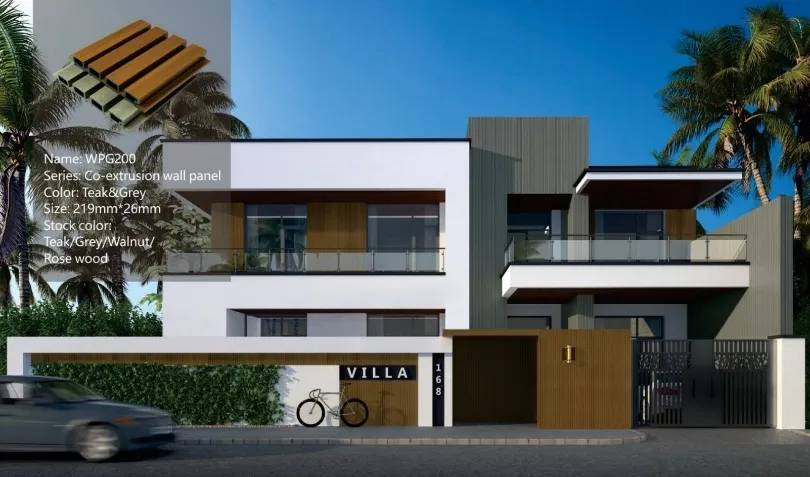
Core Features of WPC Wall Panels: What Makes Them Stand Out?
Beyond their basic benefits, WPC wall panels have several core features that make them versatile and reliable. These features are the result of their unique composition and manufacturing process, and they're what allow them to perform well in such a wide range of applications. Let's take a closer look at some of the most important ones.
Fire Resistance: A Safe Choice for High-Traffic Areas
Safety is a top priority in any building, and WPC wall panels deliver here too. While they're not completely fireproof, most WPC panels are rated as fire-retardant, meaning they resist ignition and slow the spread of flames. This is thanks to flame-retardant additives mixed into the material during production. Some panels even meet strict fire safety standards, making them suitable for hospitals, schools, and commercial buildings where fire codes are stringent. For example, a class a fireproof cpl inorganic board might be required in a hospital, but for many residential and light commercial spaces, WPC's inherent fire resistance is more than enough to provide peace of mind.
Thermal and Acoustic Insulation: Comfortable, Quiet Spaces
WPC wall panels aren't just about looks—they also improve the comfort of a space. The wood-plastic blend has natural insulating properties, helping to regulate temperature by keeping heat in during winter and out during summer. This can lead to lower energy bills, especially in rooms with large windows or exterior walls. Additionally, the density of WPC panels helps absorb sound, reducing echo and noise transfer between rooms. In a busy household with kids or a commercial space like a restaurant or office, this acoustic benefit can make a big difference in creating a calm, peaceful environment.
Lightweight and Easy to Install: DIY-Friendly or Contractor-Ready
Whether you're a seasoned DIYer or hiring a contractor, installation is a key consideration. WPC wall panels are lightweight (thanks to their hollow or foamed core, in some cases), making them easy to carry, cut, and mount. Unlike heavy stone or concrete panels, which require specialized tools and structural support, WPC panels can often be installed using basic tools like a saw, drill, and adhesive or screws. Many panels feature a tongue-and-groove system, allowing them to lock together seamlessly—no messy grout or complicated measurements needed. This not only speeds up the installation process (saving time and labor costs) but also reduces the risk of errors. Even if you're new to home improvement, you can transform a wall in a weekend with WPC panels.
Weather Resistance: Built for the Great Outdoors
While WPC wall panels are popular indoors, their durability also makes them a great choice for exterior use. Unlike wood, which can crack in freezing temperatures or warp in the sun, WPC panels are designed to withstand the elements. UV stabilizers prevent fading, even in harsh sunlight, and their moisture resistance means they won't rot or mildew in rain or snow. This makes them ideal for exterior cladding, patio walls, or outdoor kitchens. Imagine a backyard oasis with a WPC-clad accent wall that stays vibrant through rainstorms and heatwaves, or a commercial building with exterior panels that maintain their color year after year—no repainting required.
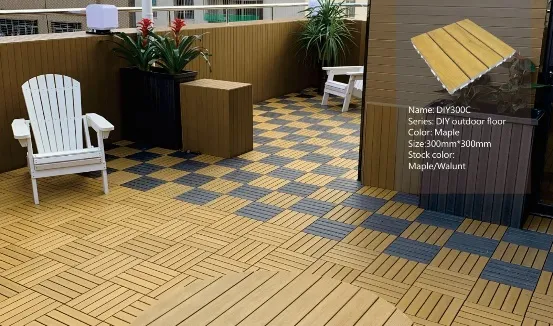
Applications: Where Can WPC Wall Panels Be Used?
We've touched on a few uses already, but WPC wall panels are surprisingly versatile. Let's explore some of the most common applications, from residential to commercial, and how wpc wall panel solutions can be tailored to each space.
Residential Spaces: Cozy, Durable, and Stylish
In homes, WPC wall panels shine in areas that need both beauty and resilience. Here are a few popular spots:
- Living Rooms: An accent wall behind the TV or sofa adds texture and warmth without overwhelming the space. Choose a wood-grain finish for a rustic feel or a smooth, matte finish for modern elegance.
- Bathrooms: Moisture-resistant WPC panels are a safer alternative to drywall or wood, which can mold in humid conditions. Pair them with porcelain slab tile for wall accents for a spa-like vibe.
- Kitchens: Backsplashes or full wall cladding protect against splashes and stains, and they're easy to wipe clean after cooking. Opt for light colors to brighten the space or bold hues for a statement.
- Bedrooms: Create a cozy headboard wall or wainscoting that adds depth without the need for paint. Soft textures like bamboo or linen-inspired finishes work well here.
- Outdoor Patios/Decks: Exterior WPC panels can clad walls, pergolas, or privacy screens, blending seamlessly with outdoor furniture and landscaping.
Commercial Spaces: Professional, Low-Maintenance, and Brand-Aligned
Businesses love WPC wall panels for their ability to maintain a polished look despite heavy foot traffic. Common commercial uses include:
- Offices: Modern, sleek panels in neutral tones create a professional atmosphere, while acoustic properties reduce noise in open-plan workspaces.
- Restaurants/Cafés: Durable enough to withstand spills and scratches, WPC panels can be customized to match a brand's aesthetic—think industrial concrete textures or warm wood tones for a cozy bistro.
- Retail Stores: Accent walls or display backdrops that highlight products without fading or showing wear, even with daily cleaning.
- Hotels/Motels: Guest rooms and lobbies benefit from WPC's low maintenance—housekeeping can quickly clean panels, and they stay looking new for years, reducing renovation costs.
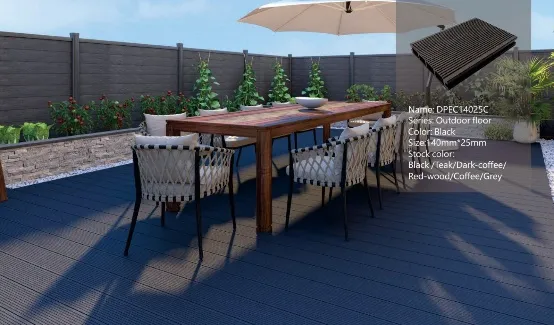
How to Choose a Reliable WPC Wall Panel Supplier
Now that you're convinced WPC wall panels are right for your project, the next step is finding a wpc wall panel supplier you can trust. With so many options on the market, it's important to do your research to ensure you're getting a quality product and comprehensive wpc wall panel solutions . Here are a few key factors to consider:
1. Quality of Materials and Manufacturing
Not all WPC panels are created equal. Ask suppliers about the ratio of wood to plastic in their panels—too much wood can make them prone to moisture damage, while too much plastic can make them brittle. Look for suppliers that use high-quality recycled materials and food-grade additives. Reputable suppliers will also provide samples, so you can test the panel's weight, flexibility, and texture in person. Don't be afraid to ask for certifications, like ISO 9001 (quality management) or CE (safety standards), to ensure the panels meet industry benchmarks.
2. Customization Options
Every project is unique, so you'll want a supplier that offers wpc wall panel solutions tailored to your needs. Can they create custom colors or textures? Do they offer panels in different sizes or thicknesses? For example, if you need panels for a curved wall, the supplier should have the capability to mold flexible panels. If you're working on a commercial project with specific fire or safety requirements, ensure they can provide panels that meet those standards (like the class a fireproof cpl inorganic board mentioned earlier).
3. Customer Support and After-Sales Service
A good supplier doesn't just sell you panels—they support you through the entire process. Look for companies that offer design advice, installation guides, or even training for contractors. After-sales service is also crucial: What's their warranty policy? Do they offer replacements for damaged panels? A supplier with strong customer support will make your project run smoother and give you confidence in your purchase.
4. Reputation and Reviews
Finally, check the supplier's reputation. Read online reviews from other customers, ask for references, or look for case studies of projects similar to yours. A saudi arabia building materials supplier with a track record of delivering quality WPC panels in the region, for example, will understand local climate conditions and building codes better than an overseas supplier with no local experience. Word-of-mouth recommendations from architects, contractors, or friends can also be invaluable.
Conclusion: Why WPC Wall Panels Are Worth the Investment
WPC wall panels are more than just a trend—they're a practical, stylish, and sustainable solution for modern design. By combining the natural beauty of wood with the durability of plastic, they offer benefits that traditional materials can't match: moisture resistance, low maintenance, eco-friendliness, and versatility. Whether you're renovating your home, designing a commercial space, or cladding an exterior wall, WPC panels deliver on both form and function.
And when it comes to bringing your vision to life, partnering with a reliable wpc wall panel supplier is key. Look for one that offers not just products, but wpc wall panel solutions tailored to your project's needs—from custom designs to expert support. With the right supplier and the right panels, you can create walls that are beautiful, durable, and built to last for decades.
So, if you're ready to upgrade your space with walls that look great and work hard, consider WPC wall panels. They might just be the perfect blend of style and substance you've been searching for.
Tags:
Recommend Products


